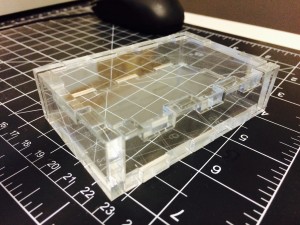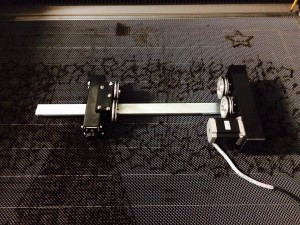I thought I could fit a 48-inch wide piece of material onto the laser’s knife table (removing the honeycomb table that usually sits on top of it). After all, it’s supposed to be a 48×36-inch laser, right?
Actually, no. If you lower the Z axis a bit, the 48″ material can be fit in between the walls of the chamber. But when you raise the Z axis to focus on the material, it hangs up on the lip surrounding the table. This makes a horrifying noise, and very likely screws up the leveling alignment of the table, and could damage the Z axis mechanism.
Try to avoid doing that!
The laser is more accurately described as a 1200x900mm machine. That works out to 47.24″ x 35.43″. And in reality, the X/Y positioning system can’t even quite cover that entire area. It can really do 47.24″ wide, but the Y positioner only spans 35.19″.
And if you have the honeycomb mesh on the table, which you usually will, your material has to stay inside the frame that holds the honeycomb. Those dimensions are 45.875″x34″.
All numbers above are approximate. Leave plenty of margin if you can.


